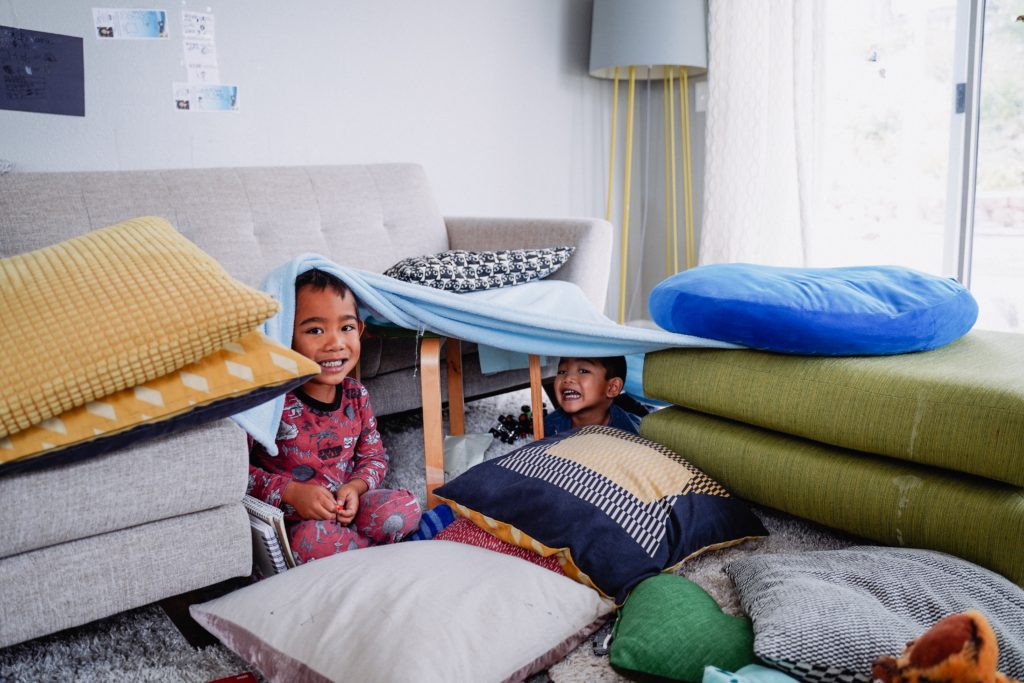As a result of the COVID-19 pandemic, many families in our country are practicing social distancing, requiring that we stay apart from our children, parents, grandparents, siblings, aunts, and uncles. May is National Foster Care Month, and the current crisis presents an unlikely opportunity for us to empathize with what families with children in foster care experience daily: fear, questions, and a vast unknown about the future. This is particularly resonant for Black and Brown families with children in foster care, a population overrepresented nationally in child welfare systems and also at higher risk for contracting the virus. A few states have risen to the challenge to ensure that efforts are made to keep these families connected, but more can still be done.
Federal law has long required that when a state takes the extreme measure of placing a child in foster care, it must make “reasonable efforts” in most instances to reunify the family.[1] Chief among the efforts state child welfare agencies are required to make is to ensure that families remain connected, largely through regular in-person visits, in order to minimize trauma and expedite reunification. This mandate has always been a logistical challenge for bureaucracies as large as child welfare systems, but the COVID-19 pandemic and the need to practice social distancing to protect staff and families from exposure to the virus has significantly intensified those challenges.
In early February 2020, prior to public awareness of the full impact of COVID-19, the federal Administration for Children and Families’ Children’s Bureau (CB), which oversees and maintains national standards for child welfare systems, released Family Time and Visitation for Children and Youth In Out-of-Home Care. The memorandum stresses that the loss children experience when separated from their parent(s) is serious and can last into adulthood.[2] It also underscores the role that family time and visitation play in reducing the trauma of separation and maintaining the integrity of the parent-child relationship.
Only weeks later, when the impact of COVID-19 began to become clear, the CB released a letter to the child welfare community to clarify expectations for child welfare systems during the pandemic.[3] In addition to urging child welfare agencies and courts to work together to ensure that mandatory judicial proceedings continue during the crisis, the CB also cautioned them not to issue blanket orders reducing or suspending family time. Instead, the CB cautioned agencies to seek alternative, creative solutions on an individualized, case-by-case basis to keep families connected, including, but not limited to, maximizing the use of technology through video conferencing or phone calls, becoming “familiar with ways in which in-person visitation may continue to be held safely,” employing family members to supervise contact, holding visits outdoors, and assessing whether children may be expeditiously reunified with their parents.
Some of these solutions will depend upon foster care agencies financially supporting the many families otherwise unable to afford cell phones, data plans, or internet access necessary to visit virtually with children in care. As described in CSSP’s policy response to COVID-19 solutions like these to the current crisis have applicability beyond the pandemic, and have the potential to help agencies reimagine existing policies and practices that have contributed to disparities in access and outcomes for communities of color.
Some child welfare systems have made adaptations to help families stay connected during the COVID-19 pandemic. Wyoming’s Department of Family Services declined to prohibit in-person visits, and instead required that determinations about family time depend on safety and risk. California’s Judicial Council issued an emergency ruling that decisions about in-person family time must be made on a case-by-case basis and take into account “whether in-person visitation may continue to be held safely.”[4] More recently, Michigan’s Children’s Services Agency issued guidance for assessing when in-person parenting time may occur. Arizona’s Department of Child Safety released its COVID-19 In-Person Visit Guide on May 15, 2020, requiring among other things that participating adults wear facial masks during visits.
These states have recognized that family time is a precious commodity when children are placed apart from their family and have developed approaches requiring them to be nimble and resourceful in their response to COVID-19. These approaches should be models for other states and provide examples of creative solutions that can be woven into the fabric of child welfare systems after the crisis subsides. As jurisdictions put into place policies for ensuring the physical health of every family, child, and child welfare worker they must also strive to promote the emotional and social well-being of our country’s families touched by the child welfare system.
[1] The Adoption Assistance and Child Welfare Act of 1980 (P.L. 96-272).
[2] Citing, Church, C., Mitchell, M., and Sankaran, V. (2019). A CURE WORSE THAN THE DISEASE? THE IMPACT OF REMOVAL ON CHILDREN AND THEIR FAMILIES, 102 Marq. L. Rev. 1163.
[3] March 27, 2020 Letter of Commissioner Jerry Milner to Child Welfare Legal and Judicial Leaders https://drive.google.com/file/d/1FJw04Hi795BodPcZ-EOKSGEbjBmJ9ICD/view
[4] John Kelly, California Courts Must Hold Some Child Welfare Hearings, Try to Continue In-Person Family Visits, The Chronicle of Social Change (April 7, 2020) https://chronicleofsocialchange.org/child-welfare-2/californiacourts-must-hold-some-child-welfare-hearings-try-to-continue-in-person-family-visits/42135
